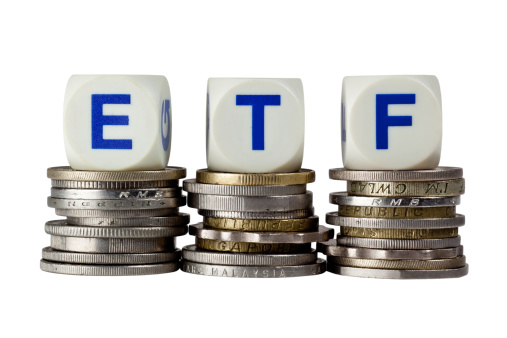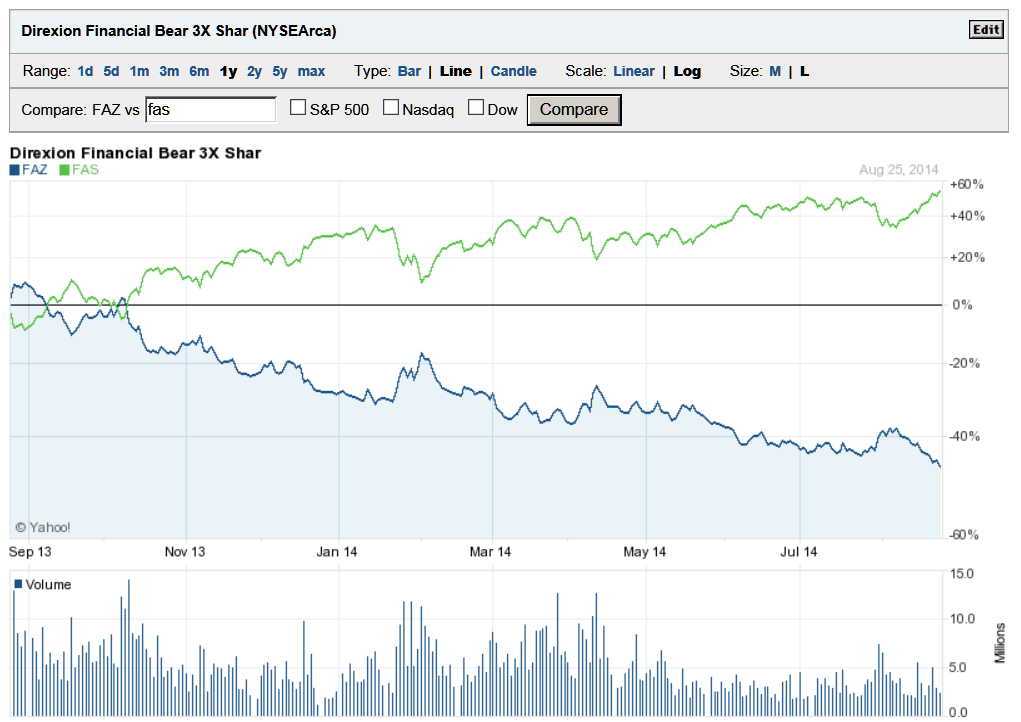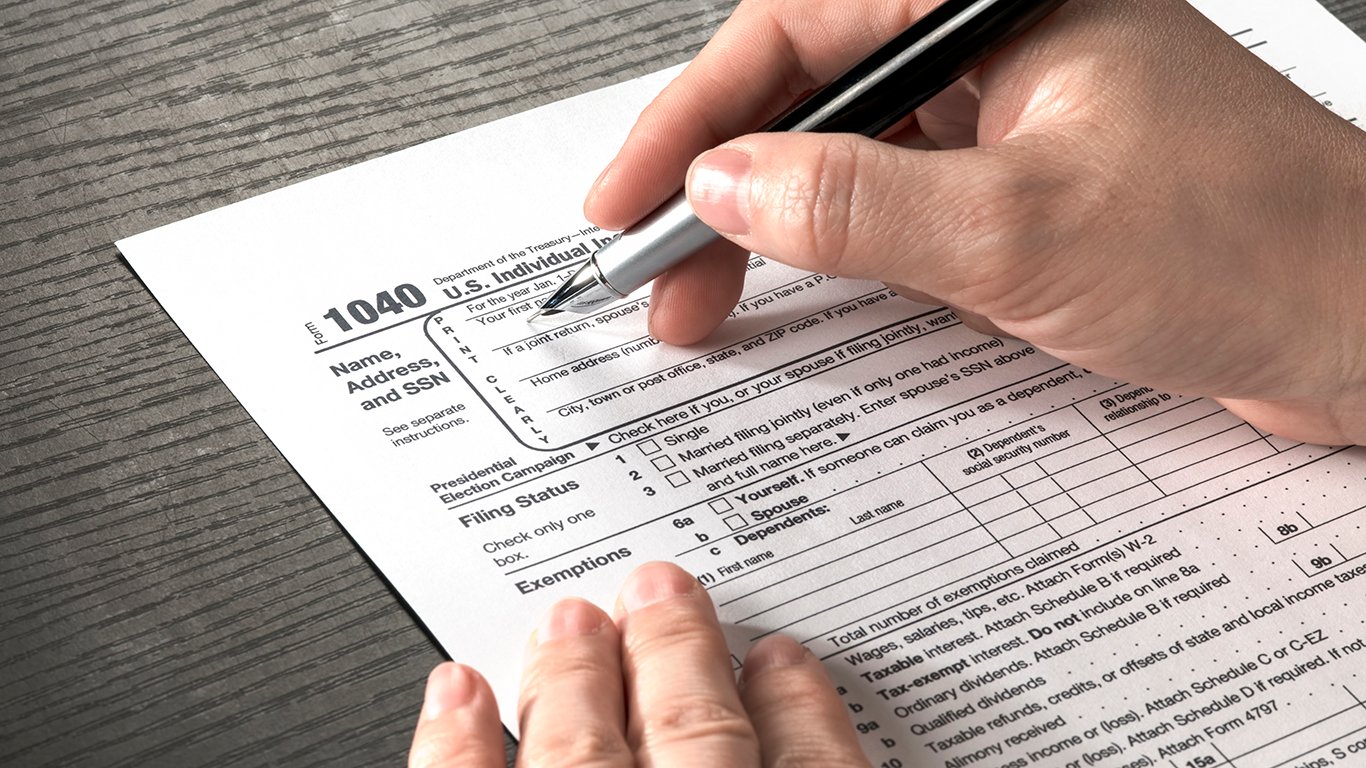August is generally considered to be the dog days of summer in the financial markets. It seems like most investors are more concerned with their last vacation of the summer and getting kids or grandkids back to school. In a period when the stock market has hit new all-time highs, trading volume has been extremely light in the month of August. This is best seen in the Direxion Daily Financial Bull 3X ETF (NYSEMKT: FAS), the triple-leveraged exchange traded fund (ETF) that covers banks and financial stocks. Source: Thinkstock
Source: Thinkstock
We looked back through time, taking into account stock splits and reverse stock splits, and the volume here is dwindling to what feels like a minimal level on a relative basis — particularly if the market is at all-time highs. It used to be very frequent to see tens of millions of shares trade in a day. Now we have the average volume well under 2 million shares a day. So far there has been only one day in August with 3 million shares in the “FAS” having traded. There was also only one day in July with 3 million shares traded, and the only day in each month were consecutive, via July 31 and August 1.
Going back farther, there were two days that the “FAS” traded less than a million shares, and that was during earnings season. And before that, the only day in June with volume over 3 million was June 12, with trading volume of 4.15 million shares. And May only had two days with trading volume above 3 million shares.
READ ALSO: What the iBillionaire ETF Changes Look Like Now
The Direxion Daily Financial Bear 3X ETF (NYSEMKT: FAZ) is actually more active than the “FAS” at this time, but its average daily is 3.25 million shares per day, also down from closer to 10 million shares in mid-2013. What is interesting is that the “FAZ” has been falling while the “FAS” has been rising.
Logic might dictate that traders would be chasing up the triple-leveraged bullish ETF rather than keeping a higher share volume in the bearish ETF. Perhaps the real culprit is relative share prices. The “FAS” trades with a $107 handle currently, and the “FAZ” trades with a $16 handle.
We cannot help but wonder if this is more “proof” that higher share prices do impact trading volume. The “FAS” has been the right trade compared to the “FAZ” in 2014. It still overtakes the “FAZ” in total volume of dollars, but not in the number of shares.
Of course there are many issues potentially accounting for the lower and lower share volumes. Tracking errors have become a known event, and these track intraday moves only. Direxion even says right up front before you even get to the warnings and disclosures that these funds should not be expected to provide three times or negative three times the return of the benchmark’s cumulative return for periods greater than a day.
READ ALSO: The 10 Most Dominant Warren Buffett Stocks
It would be easy to argue that low trading volume in the summer is the main issue here, but this trend has been long in the making. It will be interesting to see what happens in the months ahead, particularly if the stock market keeps rising to new all-times highs each month.
As a reminder, for the stock market to keep rising, it generally requires participation from the financial sector.
Sponsored: Find a Qualified Financial Advisor
Finding a qualified financial advisor doesn’t have to be hard. SmartAsset’s free tool matches you with up to 3 fiduciary financial advisors in your area in 5 minutes. Each advisor has been vetted by SmartAsset and is held to a fiduciary standard to act in your best interests. If you’re ready to be matched with local advisors that can help you achieve your financial goals, get started now.
Thank you for reading! Have some feedback for us?
Contact the 24/7 Wall St. editorial team.




